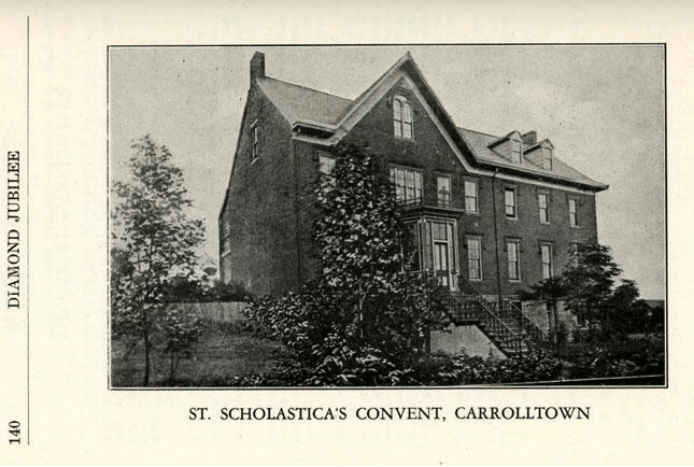
Call 724.502.2600
Our History

By the 1800s almost all Native Americans had been forced to live on reservations.
1870
The Journey Begins
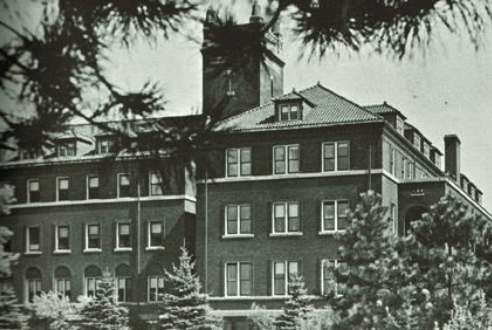
It was 1870, only five years after the Civil War, and Reconstruction was well underway.
Fortunes were being made in oil, on railroads, and in iron and coke mines. The lives of George Bissel, Rockefeller, Vanderbilt, Durant and Carnegie were already decorated. Their homes had bathrooms, they played tennis, and sent their children to private schools in custom-made clothes. But, for most people, especially immigrants flocking to America by the thousands, life was very different. For them, the “Gilded Age” was a time of great hardship.
-
Read More...
People in search of a better life were traveling through Tennessee, Virginia, Mississippi, Pennsylvania, and Missouri. Men, women and children living in the city found work in mills, factories, and canneries. Those living in rural areas worked in fields, on farms, or deep in mines. Wages were no more than $.50/hr or were paid in company houses that were little more than dilipidated shacks. The average work week was 72 hours. It was a time when production was far more important than employee safety; whether it was from farm equipment, machinery, or a rock collapse, one accident could mean death.
Prioress Mother Theresa Vogel of St. Joseph’s Convent in St Marys, Pennsylvania, answered a request from the Bishop of Pittsburgh for Sisters to serve as teachers for children of German immigrants. In response, Mother Theresa sent Sister Adelgunda Feldmann, Sister Mary Glenn and Sister Benedict Mcgill 100 miles south along the Seneca Trail through the Allegheny Mountains to Conemaugh (later named Johnstown).
After arriving, the Sisters were told to move into the Logan Hotel in the town proper. Life was grim among the rustlers, prostitutes, mountaineers, and coal and salt miners. Tuberculosis was rampant in the town.
When it was decided the Logan would be renovated into the new Catholic school the sisters moved to the home of Mrs. John Fromald until the last of the renovations were finished. It took six months for the convent school for girls of St. John Gaulbert’s parish to open.
With little support from the pastor of the church, Mother Theresa had the Sisters move to a rural town of farmers 30 miles further up the mountain. Joined by Sister Luitgard Schrant, and Sister Romano Bernhard, the Sisters arrived in Carrolltown, Pa. on October 10, 1870. The reception they received was vastly different and with the help of the entire community they opened an elementary school for St. Benedict parish.

1871
Official Motherhouse, St. Scholastica
- Read More...
Adelgunda Feldman was elected the first Prioress of this new Order. For eight years the Sisters worked tirelessly to keep the schools in Johnstown and Carrolltown open and flourishing.
During those eight years the coke and steel industry grew – as did the need for workers. Communities of Irish and German immigrants and their families, desperate for that "better life," sprang up overnight near factories and mills. To protect their religion, and their children from Protestant teachings, the newly immigrated mill workers looked for help from the Diocese. The Diocese responded by opening more schools.
Reverend Richard Phelan was aware of the great work of the Benedictine Sisters of Carrolltown. Not long after becoming Bishop, he requested their help. His request was to have the Sisters live in a community much closer to the Diocesan office in Pittsburgh. The Bishop insisted Mother Adelgunda Feldmann transfer Sisters from Carrolltown to Allegheny City, a small town of general stores, factories, tanneries, shopkeepers, and industrialists directly across the river from Pittsburgh.
The Sisters weren’t strangers to Pittsburgh. Contingents of Sisters had been sent some years before to teach at St. Peter and Paul School in East Liberty as well as St. Joseph’s on Fulton Street and Saint Mary School also in Allegheny City. It was certainly not the peaceful existence they knew in Carrolltown but Mother Adelgunda was well known for the value she placed on education and she immediately began preparations to relocate.
(First Prioress 1871-1883): Mother Adelgunda Feldman

1880s
The Sisters Leave for the City
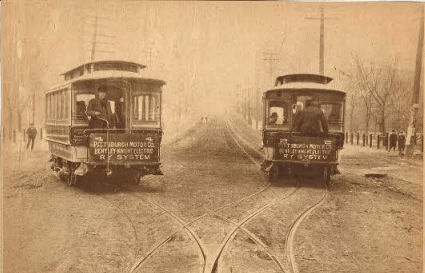
- Read More...
Mother Adelgunda located a large house on Washington St. (now known as Pressley Street) next door to the Masonic Hall in Allegheny City. Leaving only a few Sisters in Carrolltown, Mother Adelgunda and the other Sisters moved in. The nightly music, dancing, and entertainment were disturbing for the prayerful and contemplative Community. With help from donors and wealthier benefactors, Mother Adelgunda managed to buy “the Painter home - a stately brick mansion” for $15,000.
By 1889 with renovations complete, Mother Adelgunda was able to unite all of the Sisters. Together, they moved into St. Mary’s Convent on Canal St. Mother Adelgunda opened a school in the motherhouse and the convent became the Motherhouse of the Benedictine Sisters of Allegheny City.
Prioresses:
1871- 1883 Mother Adelgunda Feldman
1883 -1886 Mother Hildegarde Zwiebel
1886 -1904 Mother Adelgunda Feldman
1904 -1922 Mother Theresa Huber

Early1920s
Sisters Help Pittsburgh Find Its Faith
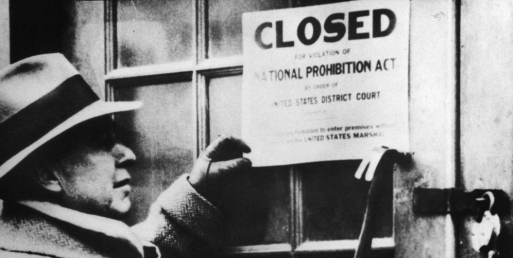
- Read More...
Well-aware of life outside the walls of the monastery, the Sisters remained contemplative and bound by the strict rules established by the Benedictine order long ago. The Sisters prayed for their neighbors daily.
The convent was always busy; the work of the Sisters was neverending.
Upon moving to Allegheny City, the new Prioress, Mother Theresa Huber, began saving money to purchase 16 acres of land in Ross Township. She intended to build a retreat home for Sisters suffering with tuberculosis. Five Sisters left to begin a new convent in Florida, a mission was opened in New Baltimore, a new community was begun in Chicago, four new schools were opened in the Pittsburgh Diocese, Sisters staffed additional schools and Sisters traveled to Oregon to begin a new Community.
In August, a fire began in the closet in the Novitiate area. A substantial part of the monastery was destroyed. With so much damage, Mother Theresa assigned the Novices to live in the convent in Carrolltown while the remaining Sisters not on mission lived in the undamaged sections of the Convent in Allegheny City.
The violent atmosphere of Pittsburgh, and the increasing numbers of unemployed from the recession, made raising money to rebuild a difficult task that took the sisters four years to overcome. With a Community of 200 and an increasing student enrollment, a monastery was seriously needed.
Prioresses:
1904 - 1922 Mother Theresa Huber
1922 - 1932 Mother Cyrilla Mitsch

Late1920s
A New House for the Sisters

- Read More...
As if they were always about to walk into a storm, just as the Sisters were moving in, a battle among the Perrysville community members reached a peak. They knew immediately just how much they were needed.
The community was split in half over annexing 300 miles to the City of Pittsburgh. Arguments of lost tax revenue versus improvements to the “town” area divided the small bedroom community. With a few horse and buggies still making their way on the cobble stone streets and surrounded by farms, the Sisters moved into a parish house.
The Benedictines, and especially the Sisters of Mount St. Mary, were forerunners in educating females. Their mission was to not only educate but to create educational standards that would empower a student with gifts of intellect and culture. Across America, teaching, nursing, and home economics were the primary fields open to women. The number of colleges that accepted female students could be counted on one hand. Those women who did acquire college degrees were considered unusually gifted, brilliant or “special” people. The Mount St. Mary Sisters, however, believed all females were capable of learning if provided with quality education, and insisted on their students reaching the bar. From the beginning the Sisters taught young women music, painting, art, languages, astronomy, the sciences, all mathematics, and philosophy.
The Sisters were also well known for providing meals for the poorer students and during snow storms when the trudge to school left a student wet and cold, the Sisters hung wet coats, shoes and hats near the boiler to dry so they could have a warmer walk home on the stone road known as Perry Highway.
In 1931, 22 girls were enrolled in the Mount St. Mary High School located on the first two floors of the left wing in the monastery. The name of the school was changed to St. Benedict Academy.
Prioresses:
1922 - 1932 Mother Cyrilla Mitsch
1932 - 1938 Mother Rosalia Luther
1938 - 1944 Mother Mechtilde Lang

1940s
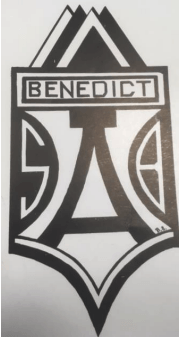
Enrollment Numbers Grow
- Read More...
By 1950, St. Benedict Academy on Perrysville Avenue opened its doors to 320 female students. The Academy remained open for 50 years and graduated more than 6,000 young women before closing in 1985.
Prioresses:
1944- 1950 Mother Gertrude Leban
1950 - 1962 Mother Dolores Bigenwald

1960s
Vatican Council II
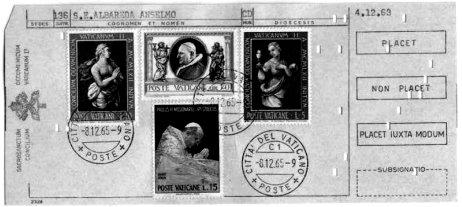
No history of the Sisters would be complete without referencing the significance of Vatican ll. Suddenly, the lives of the Sisters were changed. Gone were the strict rules of silence, isolation and discipline. Gone was the Latin Mass few could interpret. Gone was the physical attire – heavy habits, coifs and veils. Sisters were suddenly permitted to interact with the wider community of individuals and families they most wanted to help. In place of the strict discipline and rules of obedience were a new form of self-governing (discernment), and independence. This new freedom was paramount to the Sisters fulfilling their destiny. The diary of one Benedictine Sister reads: “1966-72 Years of experimentation and change involving habit, budget, silence, Council, ministry, government on the local level, visits home, community life, formation and prayer.”
1962 - 1974 Sister Pauline Stevens
1974 - 1978 Sister Demetria King
1978 - 1982 Sister Bernadine Hemberger
1982 - 1990 Sister Michelle Farabaugh

1980s
St. Benedict Academy Closes
In 1984 with enrollment numbers down and the cost of maintaining an academy going up, the Sisters decided to close St. Benedict Academy. The closure was scheduled for the following year. After St. Benedict Academy closed, the building became a center for human services. The bottom floor was leased to a program for senior citizens and adult day care. Within two years, the top floors were occupied by single women and their children placed in transitional housing by North Hills Affordable Housing (later known as HEARTH.)
During a Community meeting in 1985, the Sisters adopted the moniker, Benedictine Sisters of Pittsburgh.
1982 - 1990 Sister Michelle Farabaugh
1990 - 2002 Sister Roberta Campbell

2000s
The Journey Continues

After 10 years, the cost of maintaining the 85-year-old monastery and academy buildings became exorbitant for a Community that was beginning to age. Following many discussions during 2011, the Sisters held a Community meeting and the decision was made to close the buildings, sell the property, and rebuild a more suitable monastery at a new location.
After visiting property after property all over Allegheny County, the Sisters decided their new home would be built on a horse farm in Bakerstown, Pennsylvania. With funds raised from a capital campaign, over the course of three years a new monastery was built. Attention was paid to the fine details and needs of an aging and significantly smaller community than that seen 40 years before.
On April 22, 2013, the Sisters, led by their Prioress, Sister Benita DeMatteis, relocated to St. Benedict Monastery in Bakerstown, Pennsylvania.
- Read more
Founded by Sister Benedicta Riepp in 1852, St. Joseph’s Convent in Elk County was the first Benedictine monastery for women in the United States. It was from St. Joseph’s Convent that Sister Adelgunda was sent in 1870.
In 2014 after a very long and productive life, the Benedictine Sisters of Elk County decided to dissolve the Community and close the monastery. The 17 remaining Sisters moved to various Benedictine monasteries.
The Benedictine Sisters of Pittsburgh were blessed with the arrival of Sister Monica Steiner, Sister Mary James Dippold, and Sister Mary David Lecker.
These Sisters celebrated their final Incorporation into the Benedictine Sisters of Pittsburgh during Vespers on November 21, 2015.
2002 - 2008 Sister Michelle Farabaugh
2008 - 2014 Sister Benita DeMatteis
2014 - Present Sister Karen Brink
Your support can transform lives today and in future generations.
The Benedictine Sisters of Pittsburgh participate in shareholder engagement activities that strive to change the way companies address environmental, social, and governance (ESG) issues.”
